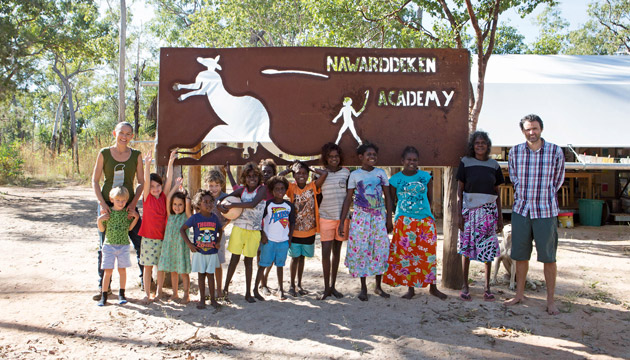The Nawarddeken Academy in the remote Arnhem Land community of Kabulwarnamyo is hoping to become an independent school.
Story and photos David Hancock
The remote schoolroom, in the wilds of western Arnhem Land, is situated on an elevated platform. Wallabies, lizards and even buffalo lumber by and the air is filled with the sounds of birds and insects, accompanied by the scent of flowering eucalypts, melaleucas and other plants.
Approximately 15 children attend the Nawarddeken Academy in the community of Kabulwarnamyo, on the Arnhem Land plateau, and it has room for at least 15 more. The age range of students varies from transition to Year 7. With two full-time teachers and assistant teachers, children are often split into small groups according to their ability levels.
The unusual school, which emphasises a blend of traditional and European-style learning, is currently aiming to be registered as an independent school. According to Daniel Constantinou, one of the full-time teachers, the Nawarddeken Academy is remarkable. “Stepping into it for the first time, it was easily the most amazing learning space I had seen,” he says. “I love the ambience and light and the fact that you are with the elements – admittedly the wind and the rain can blow through it and the work you have hanging up in the middle of the space can become water-stained, but the openness is all part of the philosophy of the school and the philosophy of being on country and immersed in the seasons and your surrounds.”
Kabulwarnamyo, some 650 kilometres south-east of Darwin and more than 150km from the nearest township, was established as a permanent community in 2003, and is home mainly to Indigenous rangers and their families.
The elevated platform that the classroom sits on is called a balabbala. It has a canvas roof stretched over a central beam and secured at each side. Balabbalas are the favoured accommodation in Kabulwarnamyo, with people primarily living on the platforms in tents.
This story excerpt is from Issue #116
Outback Magazine: December/January 2018










